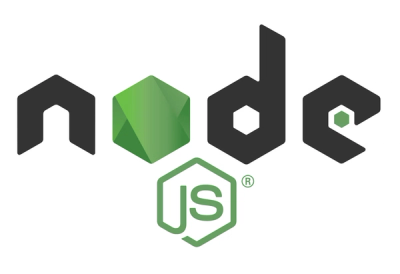
Security News
ECMAScript 2025 Finalized with Iterator Helpers, Set Methods, RegExp.escape, and More
ECMAScript 2025 introduces Iterator Helpers, Set methods, JSON modules, and more in its latest spec update approved by Ecma in June 2025.
backbone.viewkit
Advanced tools
Backbone.ViewKit is a Backbone plugin for managing views and view transitions, geared primarily toward mobile applications.
Note: This is very much still an experiment/work in progress. It has only been developed/tested in Chrome and Safari (desktop and iOS) at this point.
A demo (of the included example) is available here: http://fiddle.jshell.net/scttnlsn/xQxRY/show/. You can view/edit the code here: http://jsfiddle.net/scttnlsn/xQxRY/.
A ViewPort is a Backbone.View responsible for rendering other views inside of it (one at a time) and serves as a base class for other Backbone.ViewKit classes. To build custom ViewPorts, override the getView method and return a Backbone.View. The returned view will be displayed inside the ViewPort when the ViewPort is rendered. ViewPorts can also optionally transition between views (see Backbone.ViewKit.Transition).
var foo = new Backbone.View({ el: $('<div>foo</div>') });
var bar = new Backbone.View({ el: $('<div>bar</div>') });
var baz = new Backbone.View({ el: $('<div>baz</div>') });
var CycleView = Backbone.ViewKit.ViewPort.extend({
initialize: function() {
this.index = 0;
this.views = [foo, bar, baz];
},
getView: function() {
var view = this.views[this.index];
this.index = (this.index + 1) % this.views.length;
return view;
}
});
var cycle = new CycleView();
cycle.render(); // renders 'foo'
cycle.render(); // renders 'bar'
cycle.render(); // renders 'baz'
cycle.render(); // renders 'foo'
getView()Returns the currently "active" view to be rendered in the view port.
render([transition])Render the view returned from getView in the view port, optionally using the given transition. Emits an inview event on
the view entering the viewport and an outview on the view exiting the viewport.
A ViewSelector is a ViewPort that manages an ordered set of views which can be selected and rendered one at a time.
var viewSelector = new Backbone.ViewKit.ViewSelector({ views: [foo, bar, baz] });
viewSelector.selectView(0); // renders 'foo'
viewSelector.selectView(1); // renders 'bar'
viewSelector.selectView(2); // renders 'baz'
viewSelector.selectView(3); // throws error
Views that are managed by the selector will be able to access the selector via this.viewSelector.
new Backbone.ViewKit.ViewSelector([options])When creating a new view selector, optionally initialize it with an array of views and/or a default transition.
new Backbone.ViewKit.ViewSelector({
views: [foo, bar, baz],
transition: new Backbone.ViewKit.Transitions.Fade()
});
setViews(views)Set the views that the selector will manage. This replaces all existing views with those given and clears the previously selected index.
viewSelector.setViews([foo, bar, baz]);
selectView(index, [transition])Select the view at the given index and render it in the view port. Optionally specify a transition. Throws an error if the index is out of bounds. Emits a selected event passing the selected view and the index respectively.
A ViewStack is a ViewPort that manages a stack of views. New views can be displayed by pushing them on to the stack and one can revert to previously displayed views by popping the stack.
var viewStack = new Backbone.ViewKit.ViewStack();
viewStack.pushView(foo); // renders 'foo'
viewStack.pushView(bar); // renders 'bar'
viewStack.popView(); // renders 'foo'
viewStack.pushView(bar); // renders 'bar'
viewStack.replaceView(baz); // renders 'baz'
viewStack.popView(); // renders 'foo'
Views that are pushed onto the stack will be able to access the stack via this.viewStack.
new Backbone.ViewKit.ViewStack([options])When creating a new view stack, optionally specify any default transitions.
new Backbone.ViewKit.ViewStack({
transitions: {
push: new Backbone.ViewKit.Transitions.Slide(),
pop: new Backbone.ViewKit.Transitions.Slide({ reverse: true })
}
});
pushView(view, [transition])Push the given view onto the stack and render it in the view port. Optionally specify a transition. Emits a pushed event passing the pushed view.
popView([transition])Pop the current view off the top of the stack and render the previous view in the view port. Returns the popped view. Optionally specify a transition. Emits a popped event passing the popped view.
replaceView(view, [transition])Replace the current view with the given view. This effectively pops the stack and pushes the given view as a single operation. Returns the replaced view. Optionally specify a transition. Throws an error if there is no view to replace. Emits a popped event (see above), pushed event (see above), and replaced event passing the pushed view and the popped view respectively.
A Transition is responsible for handling the change between views returned by a ViewPort's getView method using CSS transitions. There are a number of method "hooks" that can be overridden to implement custom transitions- check out the source of the transitions bundled with Backbone.ViewKit for more details.
Slide (right to left by default) between views. Accepts various optional parameters:
new Backbone.ViewKit.Transitions.Slide({
reverse: false, // right to left
duration: 0.4, // seconds
easing: 'ease-out',
delay: 0 // seconds
});
Crossfade between views. Accepts various optional parameters:
new Backbone.ViewKit.Transitions.Fade({
duration: 0.4, // seconds
easing: 'ease-out',
delay: 0 // seconds
});
FAQs
Backbone view management and transitions
The npm package backbone.viewkit receives a total of 2 weekly downloads. As such, backbone.viewkit popularity was classified as not popular.
We found that backbone.viewkit demonstrated a not healthy version release cadence and project activity because the last version was released a year ago. It has 1 open source maintainer collaborating on the project.
Did you know?

Socket for GitHub automatically highlights issues in each pull request and monitors the health of all your open source dependencies. Discover the contents of your packages and block harmful activity before you install or update your dependencies.

Security News
ECMAScript 2025 introduces Iterator Helpers, Set methods, JSON modules, and more in its latest spec update approved by Ecma in June 2025.

Security News
A new Node.js homepage button linking to paid support for EOL versions has sparked a heated discussion among contributors and the wider community.

Research
North Korean threat actors linked to the Contagious Interview campaign return with 35 new malicious npm packages using a stealthy multi-stage malware loader.